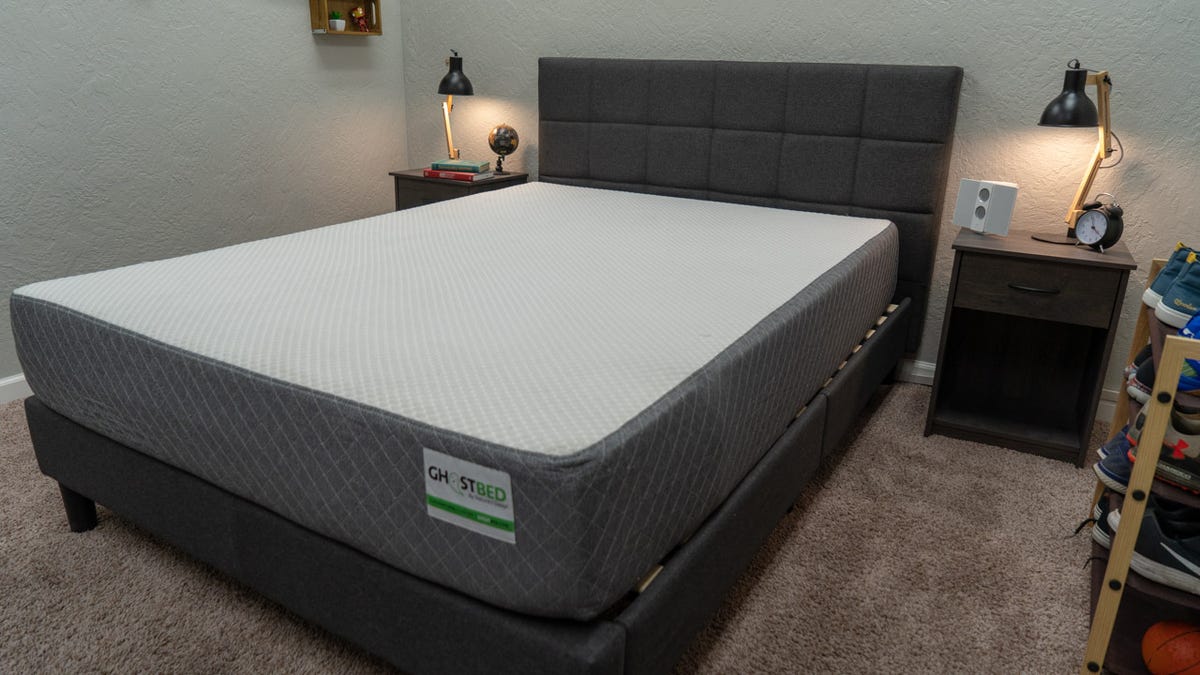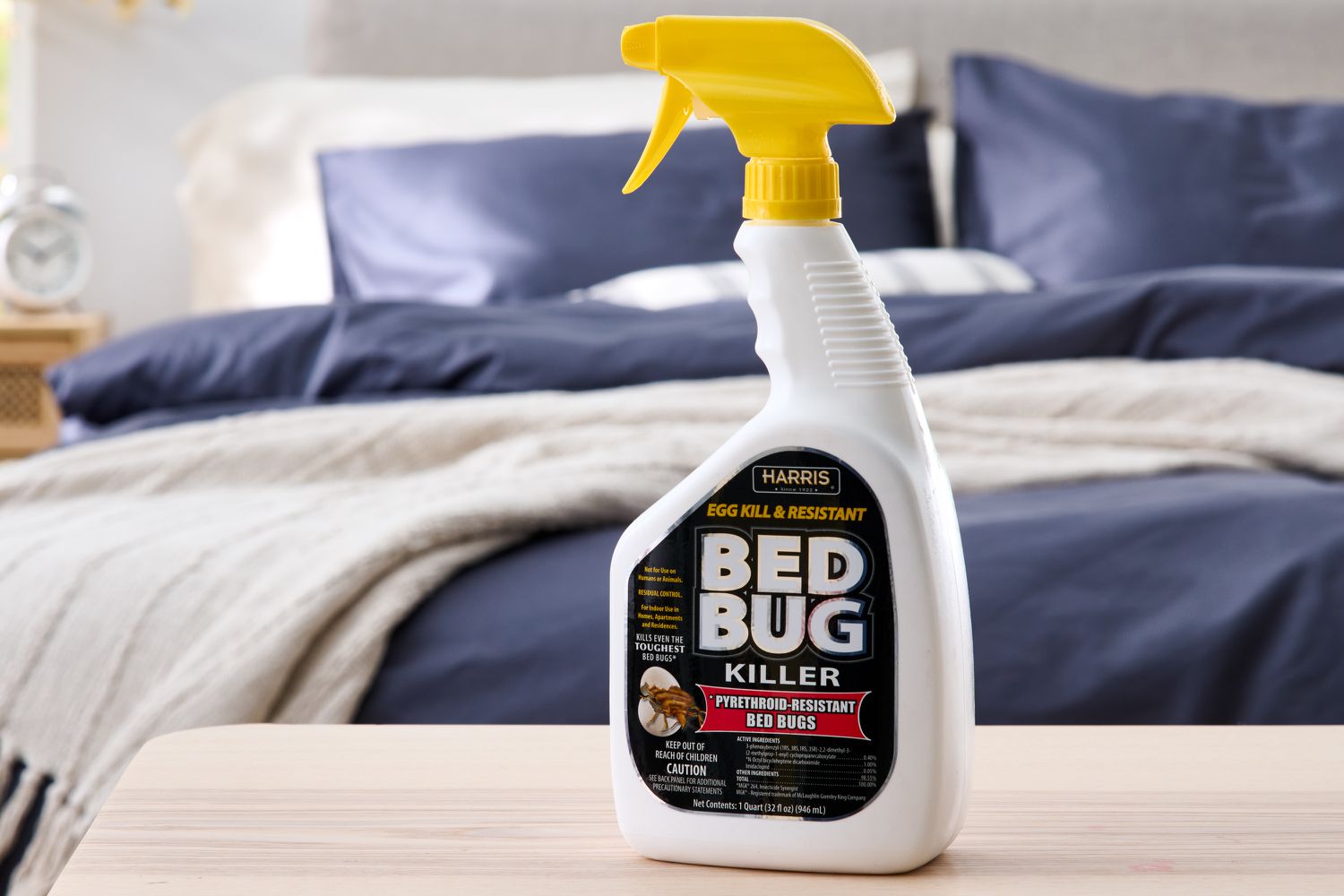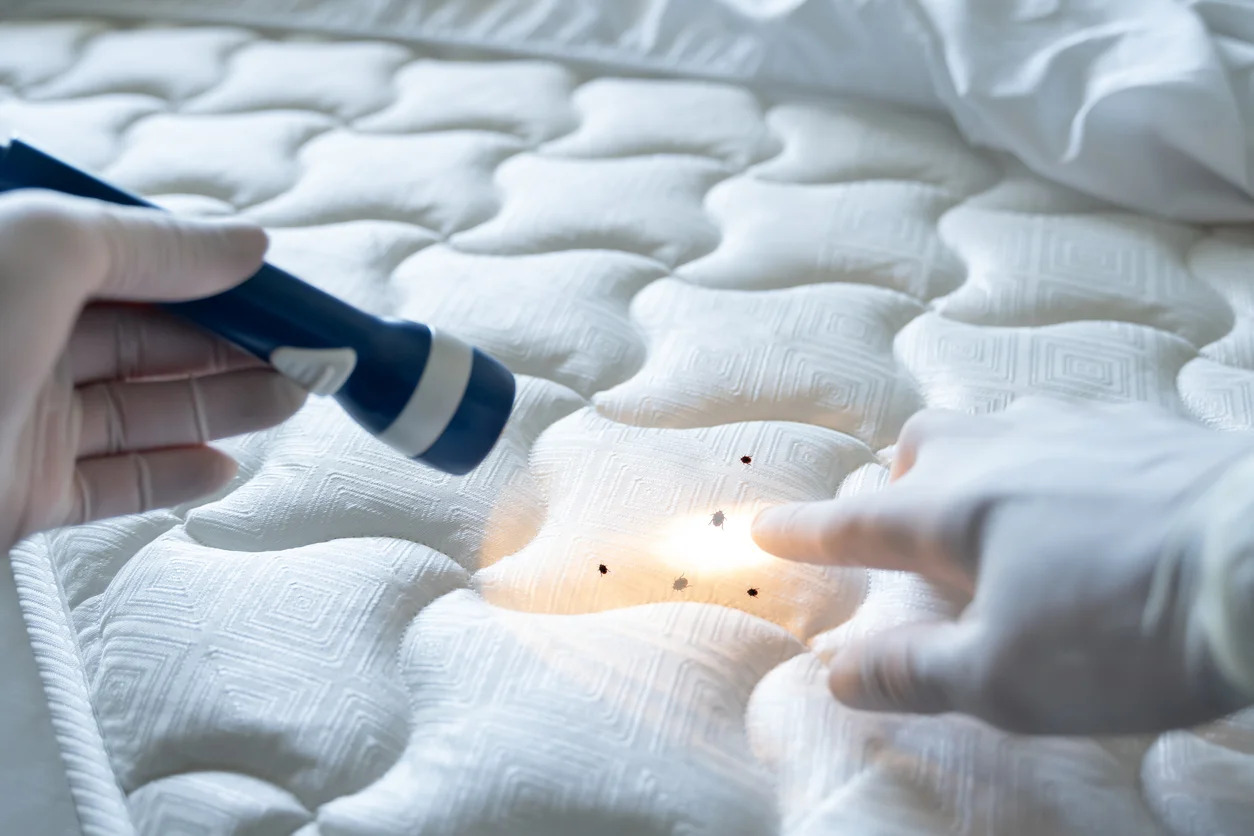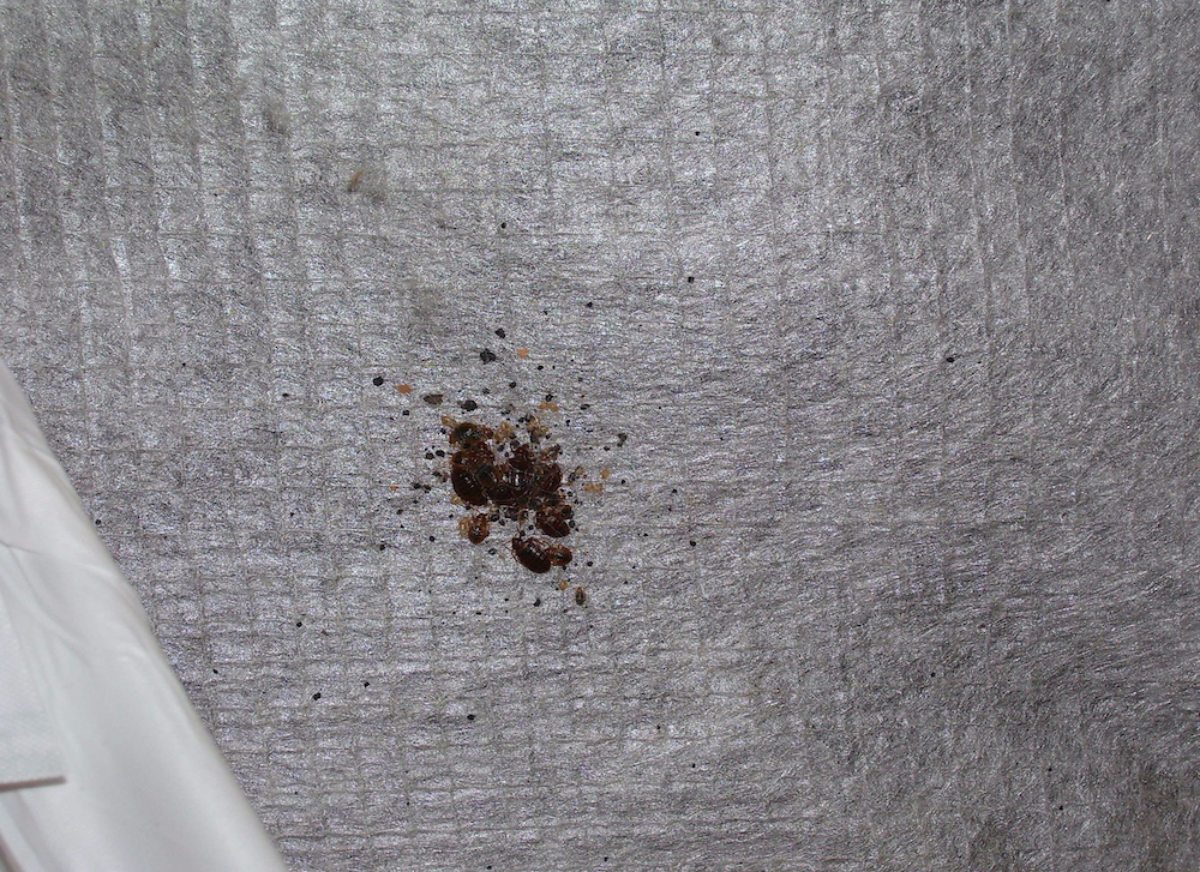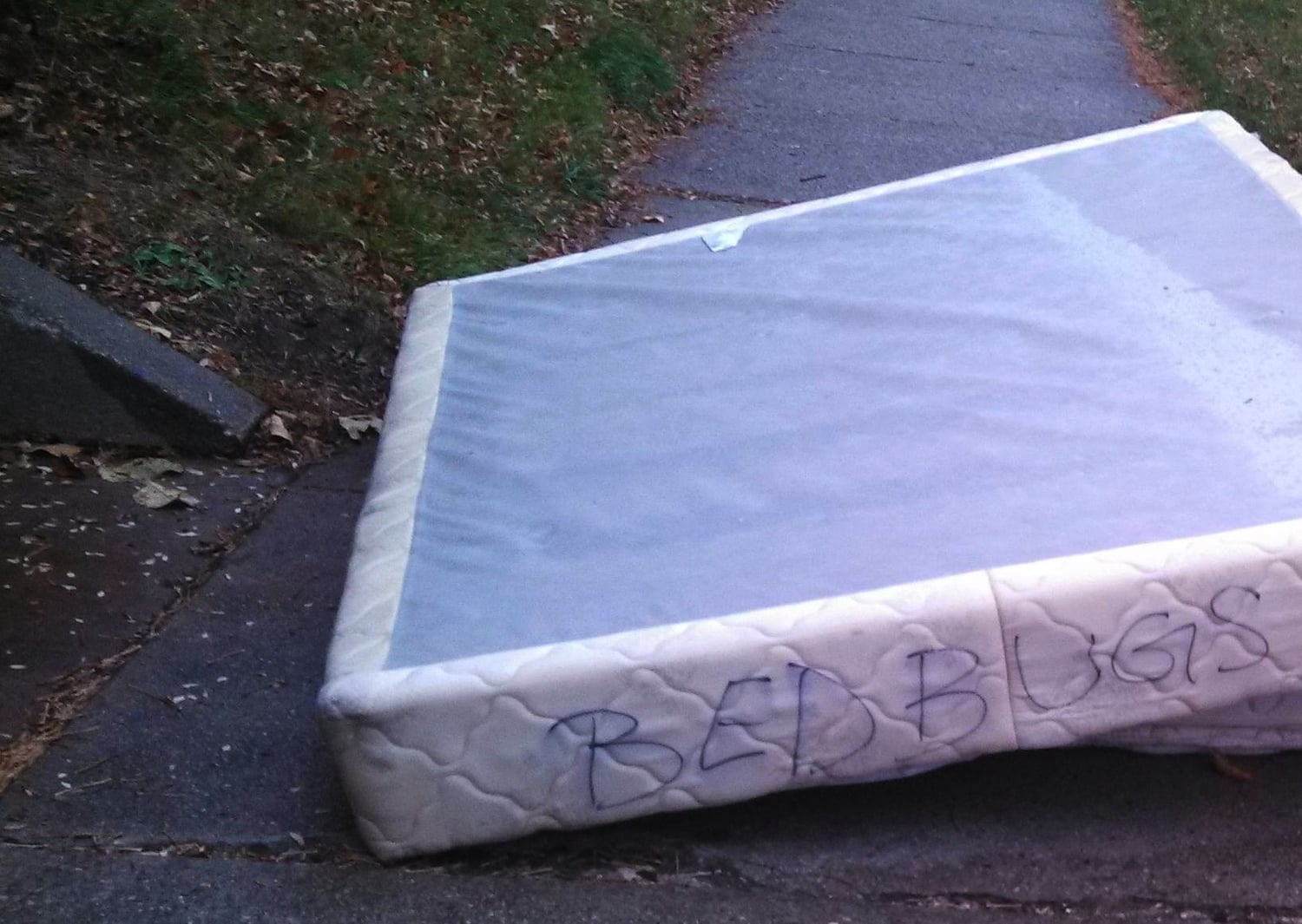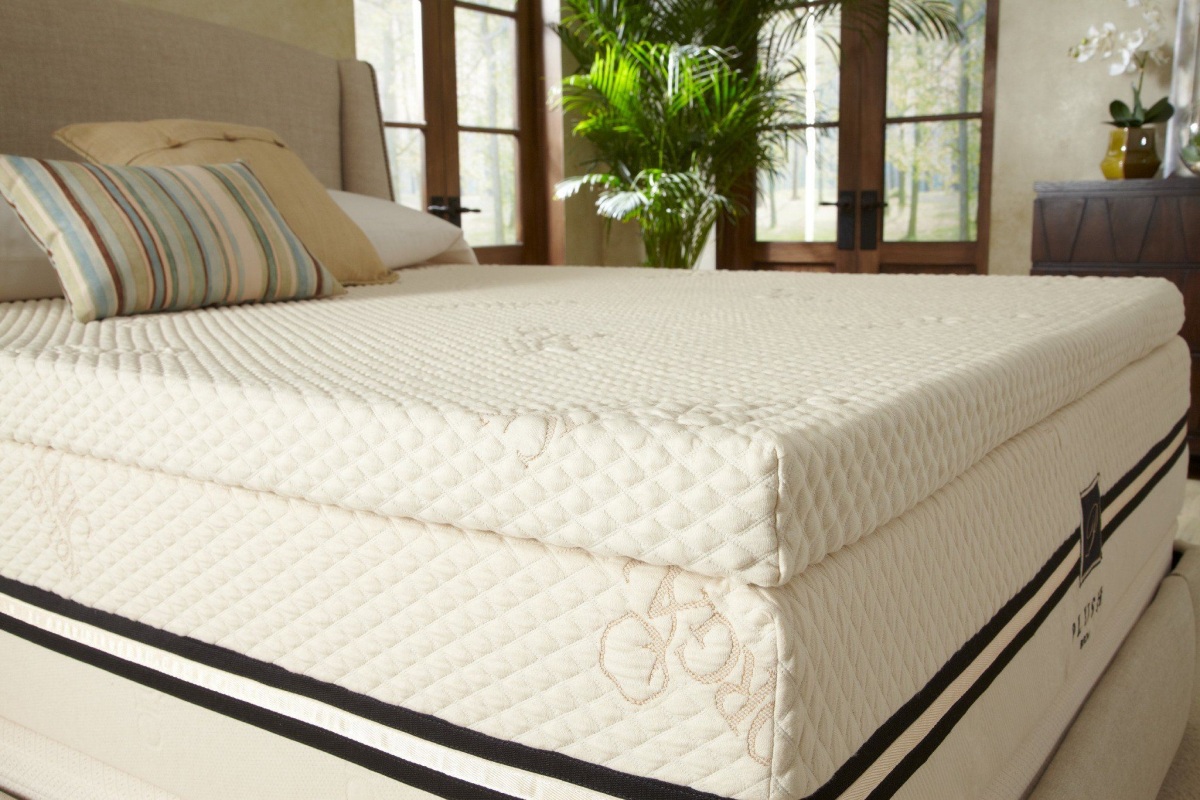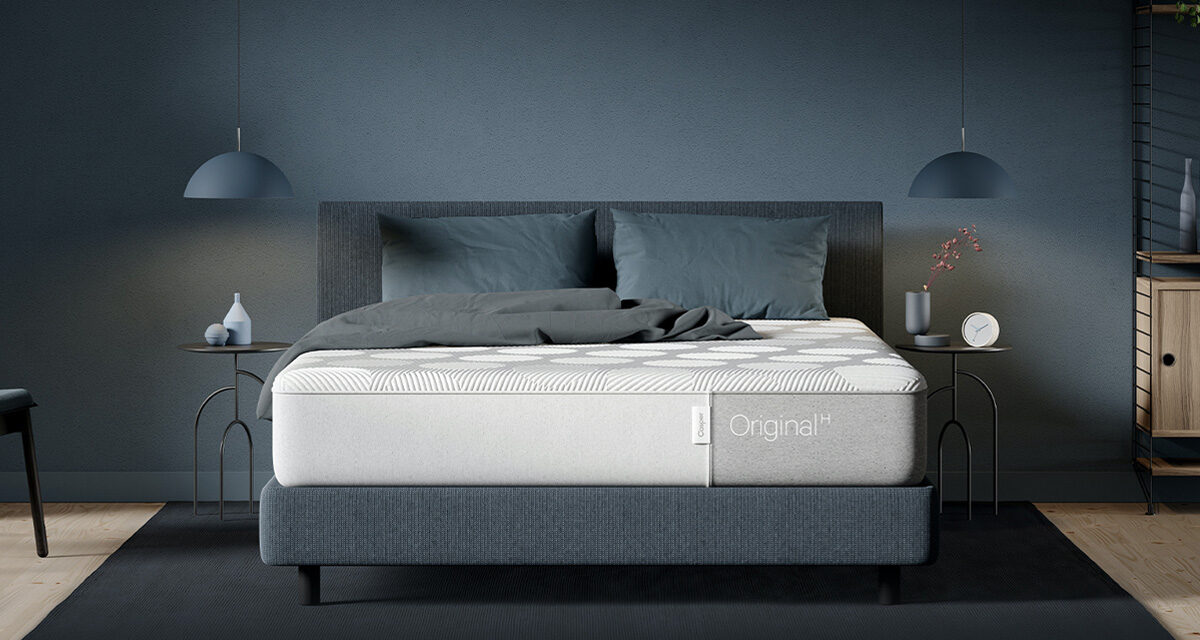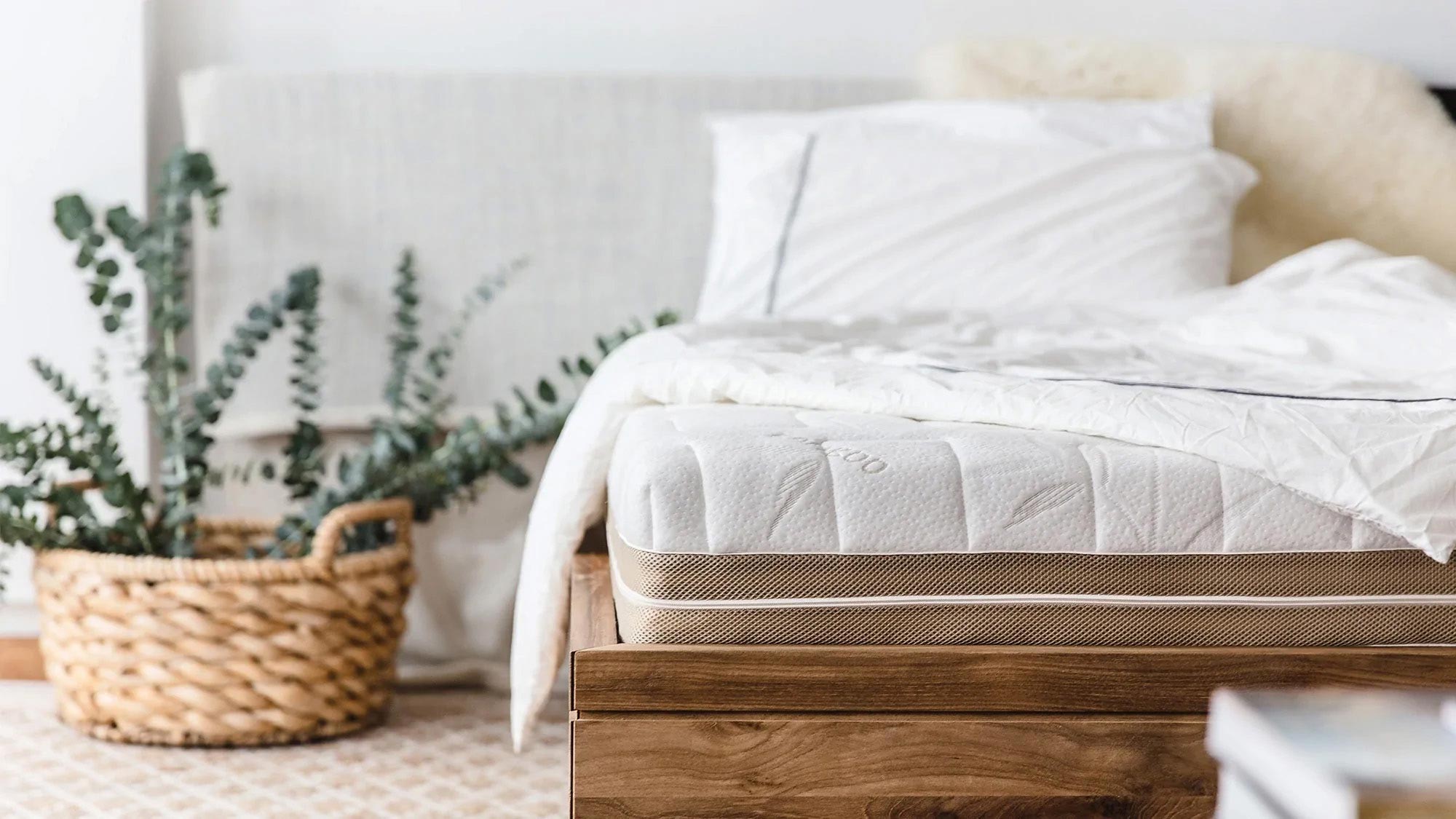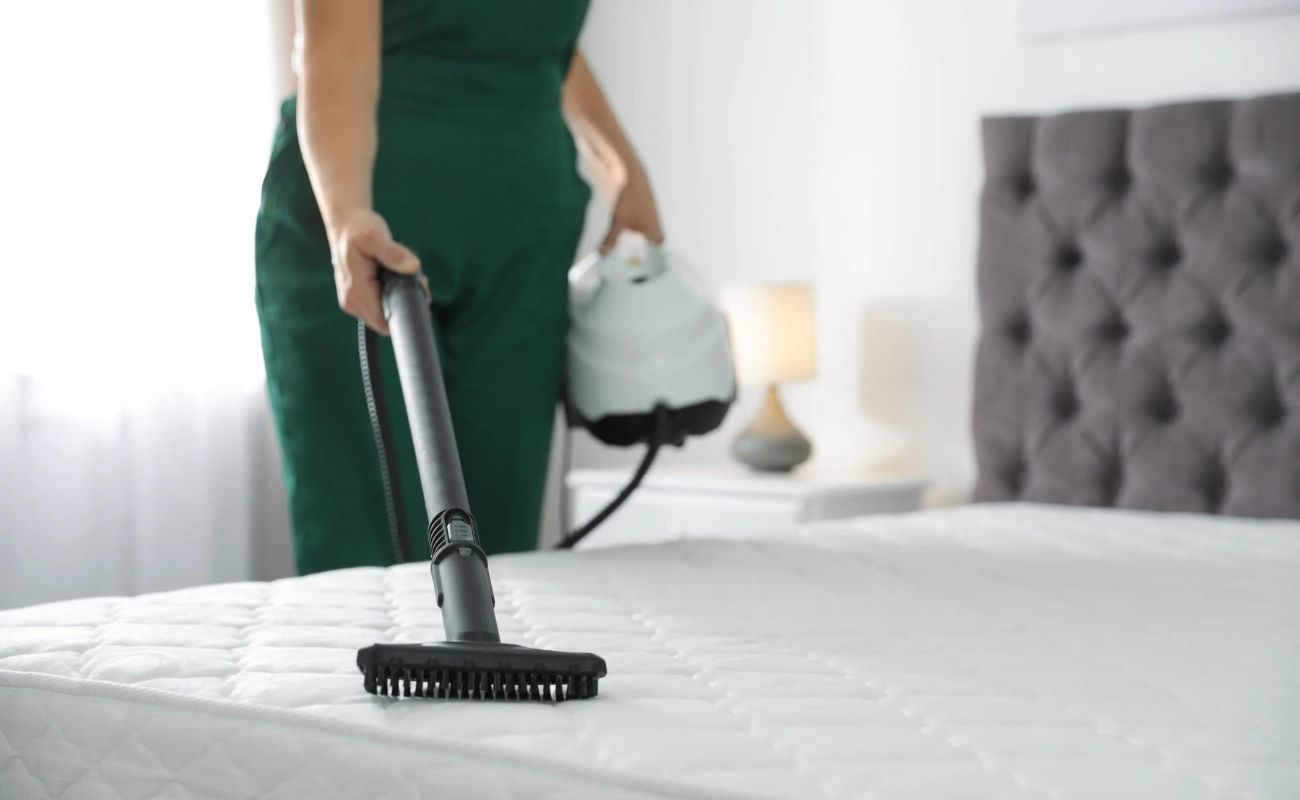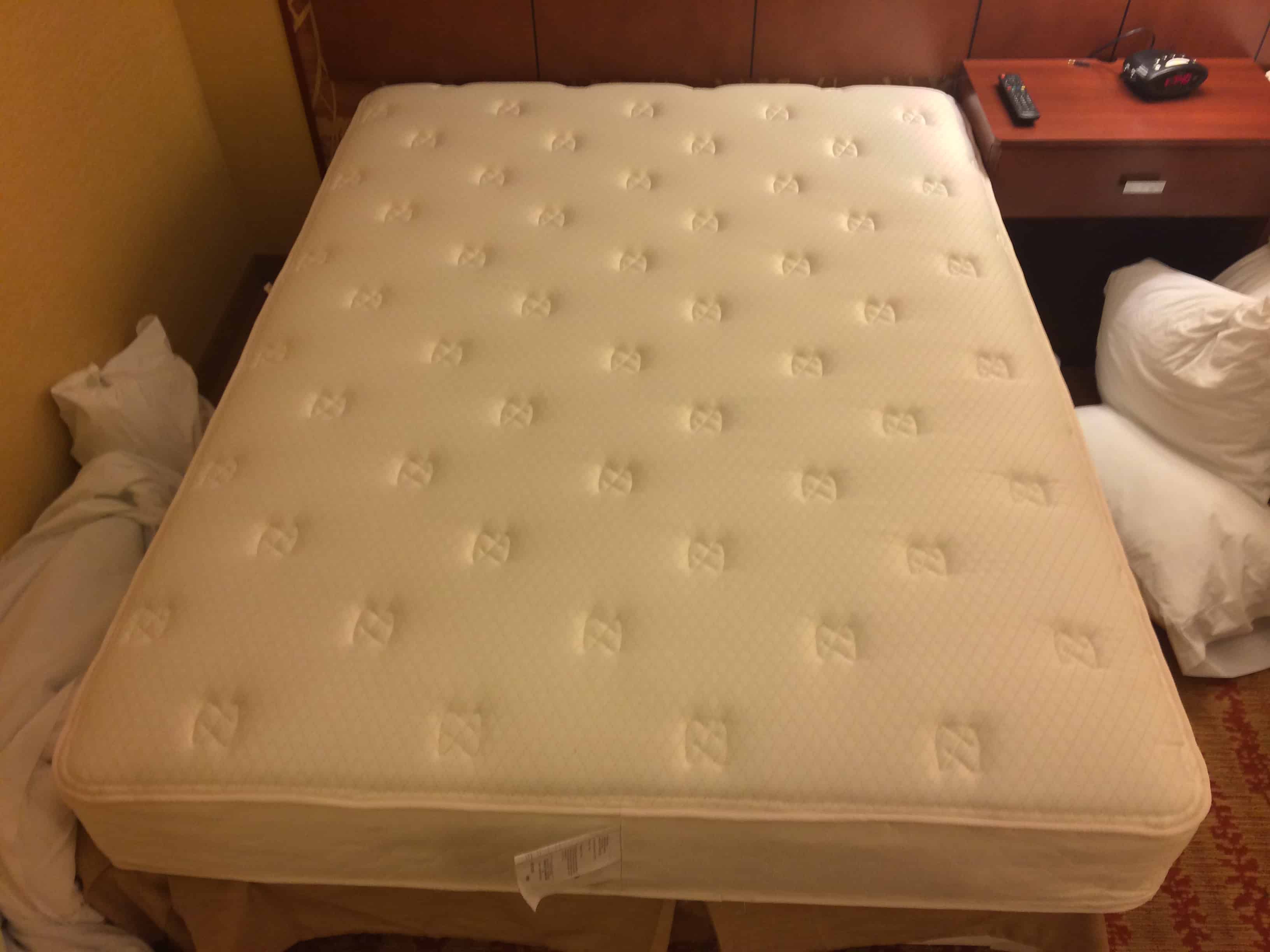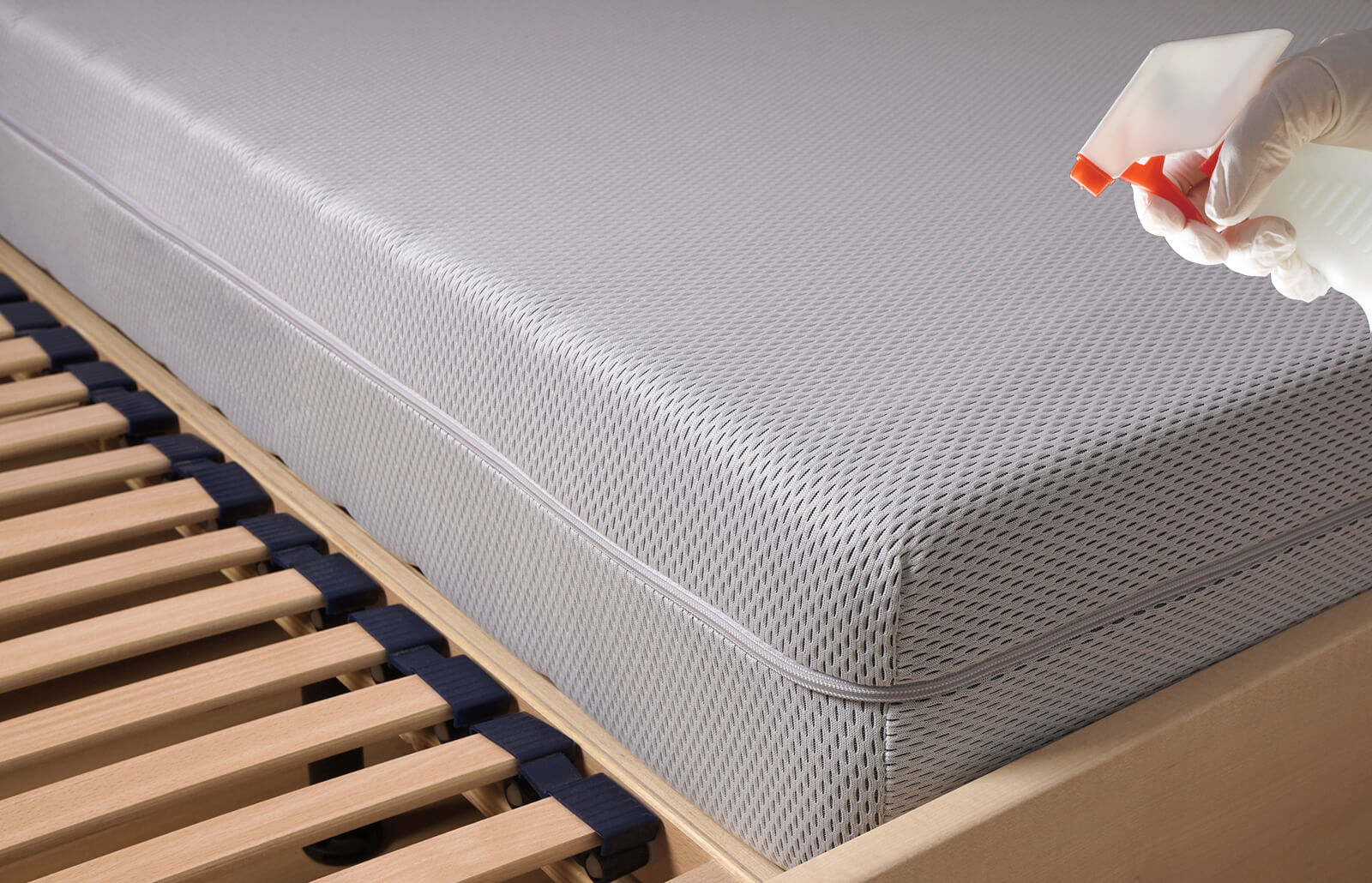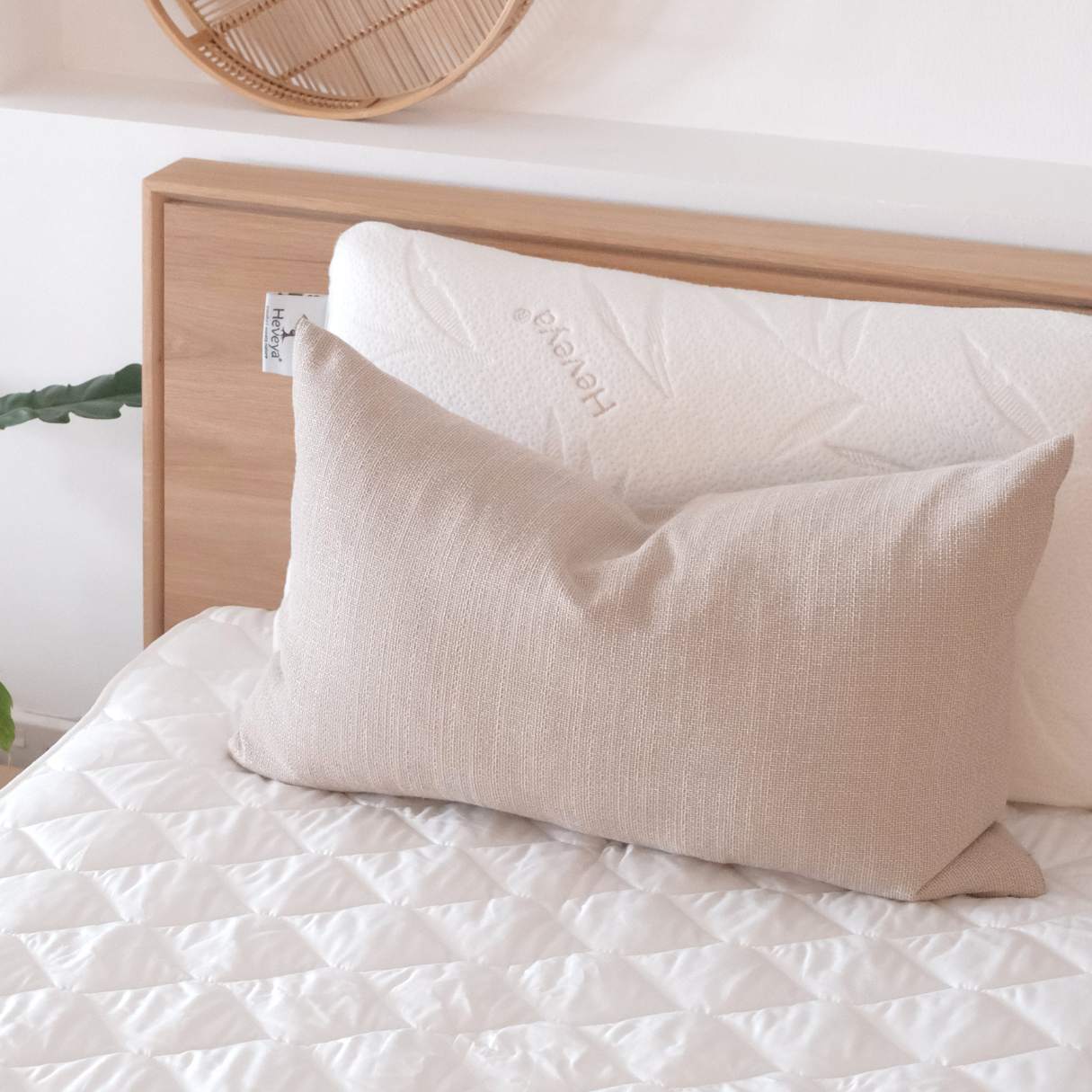Home>Furniture>Bedroom Furniture>How To Clean My Bed Mattress
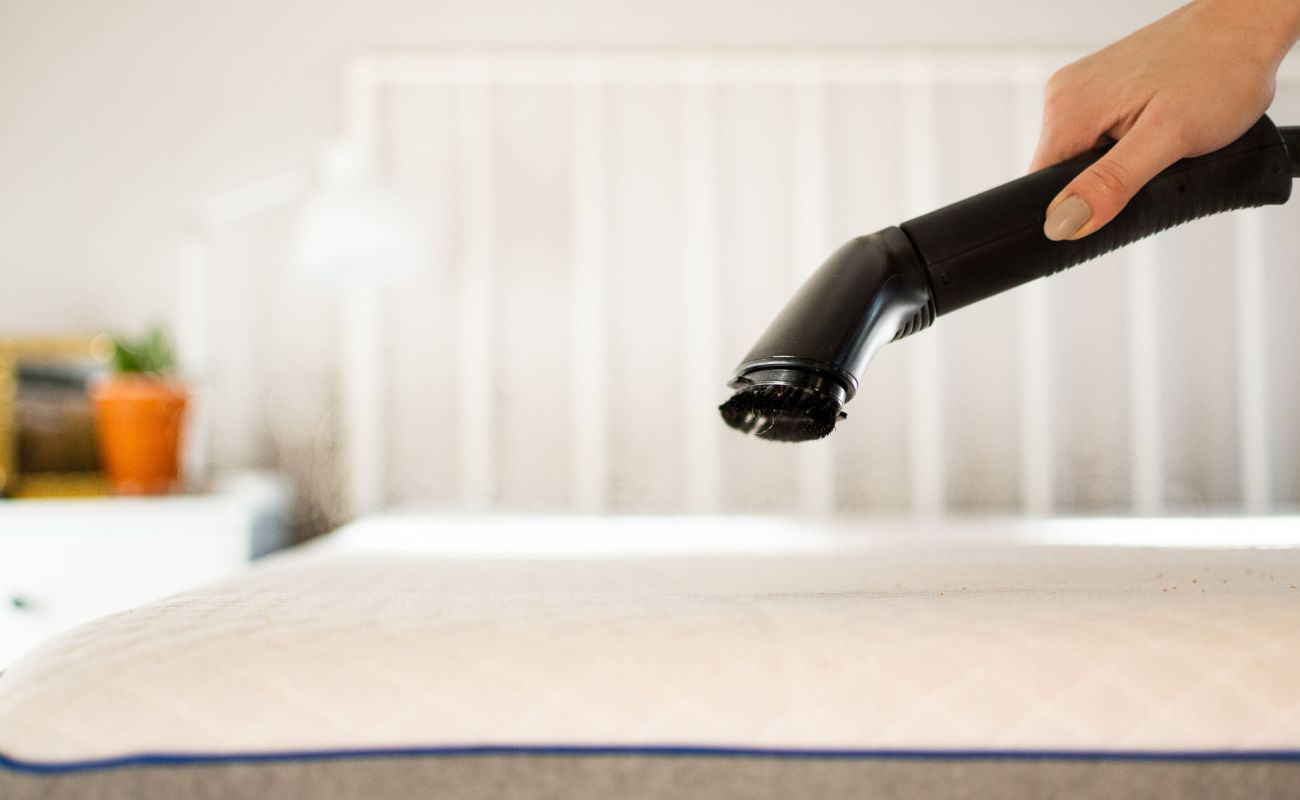

Bedroom Furniture
How To Clean My Bed Mattress
Modified: October 18, 2024
Looking for a clean and fresh bed mattress? Learn the best techniques and tips on how to clean your bedroom furniture and maintain a dust-free sleeping environment.
(Many of the links in this article redirect to a specific reviewed product. Your purchase of these products through affiliate links helps to generate commission for Storables.com, at no extra cost. Learn more)
Introduction
Our bed mattresses are not only important for a good night’s sleep but also for our overall health and well-being. Over time, mattresses can accumulate dirt, stains, and odors, which can affect both the longevity of the mattress and our sleep quality. Regularly cleaning and maintaining our bed mattress is essential to ensure its freshness, hygiene, and longevity.
In this article, we will guide you through the step-by-step process of cleaning your bed mattress effectively. From removing bedding to deodorizing the mattress, we will cover everything you need to know to keep your mattress clean, fresh, and comfortable for years to come.
Before diving into the cleaning process, it is important to note that different types of mattresses require different cleaning methods. For instance, memory foam mattresses need extra care and specific cleaning techniques compared to traditional spring mattresses. Always refer to the manufacturer’s guidelines for your specific mattress type.
So, let’s get started and learn how to clean your bed mattress to ensure optimal comfort and cleanliness for a restful night’s sleep.
Key Takeaways:
- Keep your mattress fresh and clean by regularly vacuuming, spot cleaning stains, and deodorizing with baking soda. Protect its longevity by flipping or rotating it and using a mattress protector.
- Maintain a hygienic sleeping environment by washing bedding regularly and following protective measures such as avoiding eating in bed and keeping pets off the mattress. Regular care ensures a comfortable and clean mattress for years to come.
Read more: How To Clean My Mattress At Home
Step 1: Remove Bedding
The first step in cleaning your bed mattress is to strip off all the bedding, including sheets, pillowcases, and mattress protectors. Remove everything that covers the mattress to expose it fully for cleaning.
Take this opportunity to wash all the bedding according to the manufacturer’s instructions. Use a gentle laundry detergent and the appropriate water temperature to ensure the longevity of your bedding. If there are any stains on the sheets or pillowcases, treat them before washing to increase the chances of successful stain removal.
While the bedding is being washed, let’s move on to the next step of cleaning your mattress and ensuring it stays in top condition.
Step 2: Vacuum the Mattress
Once you have removed all the bedding, it’s time to give your mattress a thorough vacuuming. This step is crucial in removing any surface dust, dirt, and debris that have accumulated over time.
Start by using the upholstery attachment on your vacuum cleaner. Begin at the top of the mattress and work your way down in overlapping strokes. Pay close attention to the seams, edges, and corners, as these areas tend to collect more dust and dirt.
When vacuuming, use long, slow strokes to ensure that the vacuum cleaner effectively picks up all the particles. Take your time and go over each section multiple times to ensure a thorough clean.
In addition to vacuuming the top surface of the mattress, remember to also vacuum the sides and bottom of the mattress. This will help remove any dust or allergens that may have settled there.
If you have a memory foam mattress, be gentle while vacuuming to avoid damaging the foam. Use the soft brush attachment or adjust the vacuum’s suction to a lower setting to prevent any potential damage.
By regularly vacuuming your mattress, you will not only remove surface dirt but also minimize the risk of allergens and dust mites that can affect your sleep quality and respiratory health.
Step 3: Spot Clean Stains
Even with regular maintenance, it’s common for mattresses to develop stains over time. Whether it’s spilled drinks, sweat stains, or other accidents, it’s important to address these stains promptly to prevent them from setting in permanently.
To spot clean stains on your mattress, you’ll need a mild cleaning solution and a clean cloth or sponge. Here’s what you need to do:
- Identify the stains: Inspect your mattress closely to locate any visible stains or marks. Common stains include coffee, blood, urine, or food stains.
- Prepare the cleaning solution: Mix a small amount of dish soap or mild detergent with warm water. Avoid using harsh chemicals or bleach, as they may damage the fabric and materials of your mattress.
- Test in an inconspicuous area: Before applying the cleaning solution directly to the stain, test it in a small, inconspicuous area of the mattress to ensure it doesn’t cause any discoloration or damage.
- Blot the stain: Using a clean cloth or sponge, gently blot the stain, starting from the outer edges and working your way toward the center. Avoid rubbing the stain, as it can cause it to spread further.
- Repeat if necessary: For stubborn stains, you may need to repeat the blotting process multiple times until the stain begins to fade.
- Rinse and dry: Once the stain has been lifted, dampen a clean cloth with plain water and blot the area to remove any residue from the cleaning solution. Allow the mattress to air dry completely before putting any bedding back on.
If the stain is particularly stubborn or if you’re not confident in your ability to remove it, consider using a specialized mattress stain remover or consult a professional mattress cleaning service.
Keep in mind that prevention is always better than cure, so make an effort to use mattress protectors or waterproof covers to safeguard your mattress from potential spills and stains.
Vacuum your mattress regularly to remove dust, dirt, and allergens. Spot clean any stains with a mixture of mild detergent and water, then allow to air dry. Use a mattress protector to prevent future stains.
Step 4: Deodorize the Mattress
Over time, mattresses can develop odors due to sweat, spills, and other factors. To freshen up your mattress and eliminate any unpleasant smells, follow these steps to deodorize it:
- Sprinkle baking soda: Liberally sprinkle baking soda over the entire surface of the mattress. Baking soda is a natural deodorizer that can help absorb odors.
- Spread it evenly: Use a clean brush or your hands to spread the baking soda evenly across the mattress. Gently massage it into the fabric, focusing on areas that may have absorbed more odor.
- Let it sit: Leave the baking soda on the mattress for at least 1-2 hours, or longer if possible. This will allow the baking soda to effectively absorb the odors.
- Vacuum the baking soda: After the allotted time, vacuum the mattress thoroughly to remove the baking soda. Use the upholstery attachment and go over the entire surface in a slow and thorough manner.
- Air out the mattress: Open windows or turn on fans to let fresh air circulate in the room. This will help further eliminate any lingering odors.
Deodorizing your mattress with baking soda can also help eliminate any dust mites that may be present. Baking soda is safe and non-toxic, making it an ideal choice for freshening up your mattress without harsh chemicals.
Remember to repeat this deodorizing process every few months or as needed to maintain a fresh and odor-free mattress.
Read more: How To Clean Mattress After Bed Wetting
Step 5: Flip or Rotate the Mattress
Flipping or rotating your mattress is an important step in maintaining its integrity and prolonging its lifespan. By regularly changing the position of the mattress, you can distribute the weight evenly and prevent sagging or indentations from forming in specific areas.
Not all mattresses are designed to be flipped, so it’s crucial to check the manufacturer’s guidelines or instructions before proceeding with this step. If your mattress is not designed to be flipped, you can still rotate it from head to foot.
Here’s how you can flip or rotate your mattress:
- Check the manufacturer’s instructions: Review the information provided by the mattress manufacturer to understand whether your mattress can be flipped, rotated, or both.
- Clear the space: Prepare the area around the bed by removing any obstacles or furniture that might hinder the flipping or rotating process.
- Enlist a partner: Mattresses can be heavy and cumbersome, so it’s best to have someone assist you with the flipping or rotating process.
- Flip or rotate: If your mattress can be flipped, carefully lift one end of the mattress and flip it over, so the opposite side is facing up. If your mattress can’t be flipped, simply rotate it 180 degrees so that the head area is now the foot area.
- Adjust and settle: Once the mattress is flipped or rotated, ensure that it is positioned correctly on the bed frame. Smooth out any wrinkles or folds in the bedding to prevent discomfort during sleep.
By regularly flipping or rotating your mattress, you can prolong its lifespan and help maintain its supportive structure. This step is especially important for mattresses that are used frequently or have a higher density foam or coil system.
Step 6: Protect the Mattress
To ensure the longevity and cleanliness of your mattress, it’s important to take proactive measures and protect it from potential damage, spills, allergens, and dust mites. Here are some ways to effectively safeguard your mattress:
- Use a mattress protector: Invest in a high-quality mattress protector that is waterproof, hypoallergenic, and breathable. A mattress protector acts as a barrier, preventing liquids, stains, and allergens from coming into direct contact with the mattress.
- Wash bedding regularly: Wash your sheets, pillowcases, and other bedding items on a regular basis to maintain cleanliness and hygiene. This will also help prevent the transfer of dirt and allergens to your mattress.
- Don’t eat or drink in bed: Avoid eating or drinking in bed to minimize the risk of spills and stains. If you must have a drink nearby, use a spill-proof cup or bottle to prevent accidents.
- Keep pets off the mattress: While cuddling with your furry friends can be tempting, keeping pets off the mattress can help prevent pet hair, dander, and accidents that may result in stains or odors.
- Avoid jumping or putting excessive weight on the mattress: Although it may be tempting, avoid jumping or putting excessive weight on the mattress. This can cause damage to the internal structure and lead to sagging or premature wear and tear.
- Rotate or flip the mattress regularly: As mentioned in Step 5, regularly rotating or flipping your mattress can help distribute the weight evenly, preventing certain areas from becoming worn out or saggy.
By following these protective measures, you can help extend the life of your mattress and ensure that it remains clean, comfortable, and in optimal condition for years to come.
Conclusion
Cleaning and maintaining your bed mattress is not only crucial for its longevity but also for your overall sleep quality and health. By following the steps outlined in this guide, you can effectively clean and refresh your mattress, ensuring a comfortable and hygienic sleeping environment.
Start by removing all bedding and thoroughly vacuuming the mattress to remove surface dirt and debris. Address any stains promptly by spot cleaning them using gentle cleaning solutions. Deodorizing the mattress with baking soda will help eliminate odors and keep it smelling fresh. Additionally, don’t forget to regularly flip or rotate the mattress to distribute the weight evenly and protect its structural integrity.
To further safeguard your mattress, consider using a mattress protector that is waterproof and hypoallergenic. This will prevent spills, stains, allergens, and dust mites from compromising the cleanliness and longevity of your mattress. And remember to maintain good hygiene by washing your bedding regularly.
With these simple steps and regular care, your bed mattress will provide you with a clean, comfortable, and restful sleeping environment for years to come.
Frequently Asked Questions about How To Clean My Bed Mattress
Was this page helpful?
At Storables.com, we guarantee accurate and reliable information. Our content, validated by Expert Board Contributors, is crafted following stringent Editorial Policies. We're committed to providing you with well-researched, expert-backed insights for all your informational needs.
